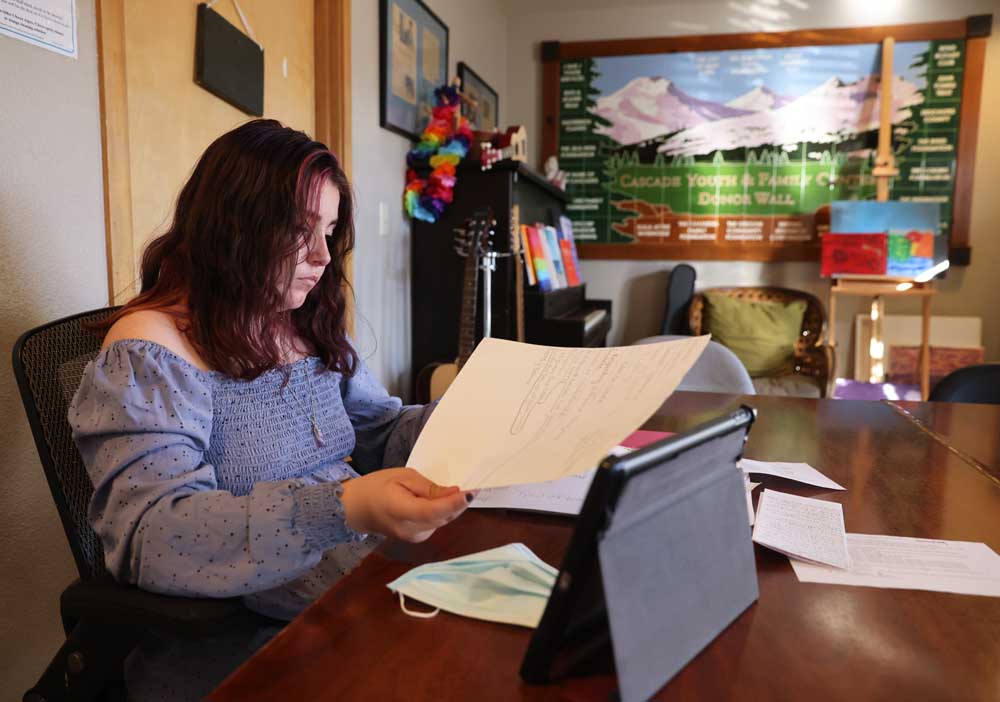Central Oregon students and advocates: Better support needed for homeless students
Published 4:00 am Sunday, October 17, 2021

- Hailey King, a 16-year-old junior at Summit High School, studies history at The LOFT in Bend.
Early detection of a student’s housing trouble or housing needs is critical for connecting those students to academic coaches, mentors or basic needs advocates, experts say.
“This is not about lack of talent, this is not about lack of ability, it’s not about lack of effort,” said Barbara Duffield, executive director of SchoolHouse Connection, a national nonprofit focused on stopping the cycle of homelessness through education. “These are young people who have all the talents in the world — talent is equally distributed, an opportunity is not. So it is entirely possible for high schools and school districts to improve their graduation rates.”
A lot of that early detection work already takes place in Central Oregon school districts.
Each year at Bend High School, Steve Wetherald looks at data on incoming students’ attendance, grades, behavior and other factors. The school pulls the students at the highest risk of getting off track into its freshman academy, which provides tighter-knit relationships with teachers and other students in an effort to make up for those barriers.
“Math and science and English are important, but the relationships that kids build with each other and with their teachers in high school — for a kid who struggles, that’s what gets them through,” Wetherald said.
Duffield also points to the Maslow Project in Southern Oregon as a model program. It’s similar to Central Oregon’s FAN, blurring the line between educational needs and basic needs with resource navigators and educational assistants working together in dedicated centers throughout the district.
At North Medford High School, for example, homeless students have a dedicated space they can use to ask for tutoring help, assistance finding new housing, look through racks of clothing donations or simply have a quiet place to study. Fallon Stewart, a program supervisor with the nonprofit, says 98% of the students assisted by the Maslow Project go on to graduate.
Central Oregon’s homeless and formerly homeless students have ideas, too. Uriah Barzola and Sierra Williams agreed the region needs more shelters for homeless youth.
Hailey King said the community needs to pay better attention to its youngest homeless residents, and all three youth agreed that finding an affordable place to live on their own was nearly impossible, even with a housing grants.
Beyond those kinds of programs, Duffield advocates for more direct relationships between schools and housing. She says some districts have built partnerships with housing organizations to provide direct support.
“If schools were a resource that could just provide this assistance directly, then you’d have the education and the housing all in one spot. Schools could rightly say, ‘we’re not in the business of housing, we’re educators, but the housing challenges of our young people are getting in the way of school,’” Duffield said.
She compares housing needs to hunger. For years, schools have provided free or reduced-price meals to students whose lunchtime hunger gets in the way of their learning.
“If we’re reimagining everything in the pandemic, well, let’s reimagine this then,” she said.
Hasani Davenport, who coordinates street outreach for J Bar J, said that individuals in the community can help by paying attention to the youth around them. Kids staying over at friends’ houses or consistently wearing the same clothes could indicate a family’s struggle behind the scenes, he said.
“If we all could just step in and say, ‘oh this child needs help, let’s help them,’ and not be judgmental,” Davenport said. “It’s about the kid, help the kid become successful.”
Each child helped now could mean one less homeless adult in the future, advocates say.






